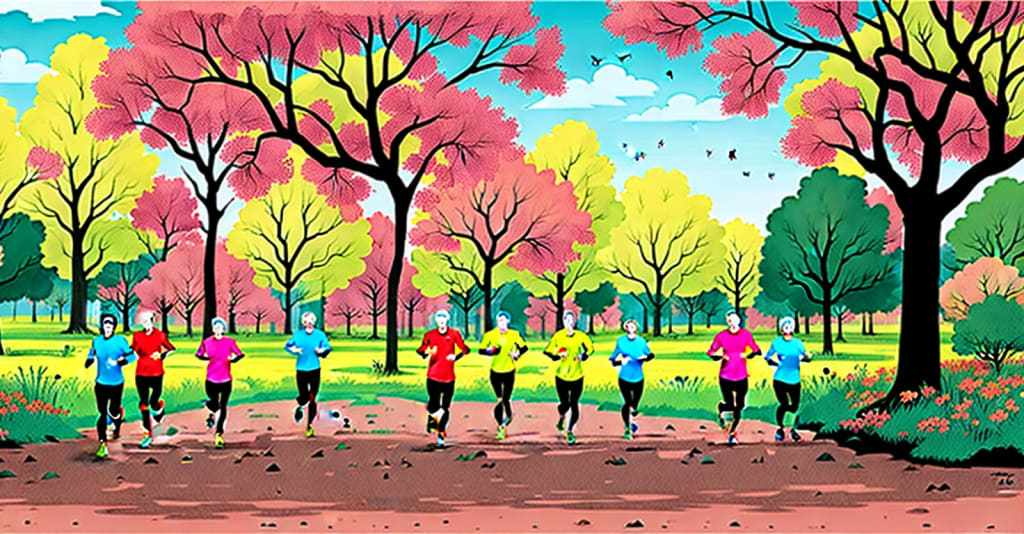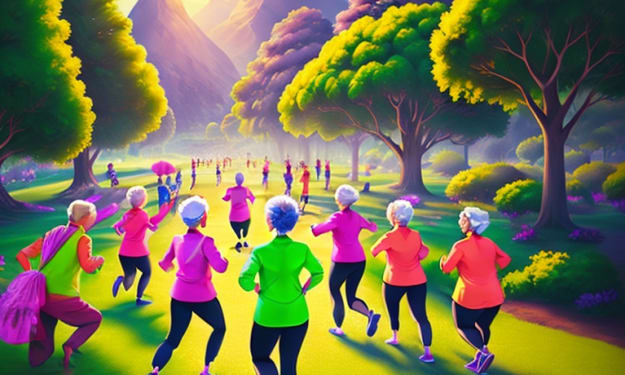Pushing the Limits: Advanced Workout Techniques for Seniors
Staying fit and active is essential at every age

Introduction
Staying fit and active is essential at every age, but it becomes increasingly important as we grow older. Today, we delve into the realm of senior fitness, focusing on advanced workout techniques designed to keep seniors healthy, active, and strong.
The Importance of Physical Activity in Seniors
Age is just a number, and staying fit and active should never become a thing of the past. As we age, regular exercise becomes increasingly crucial to maintain our physical and mental health.
Find much more on this link.
Benefits of Regular Exercise
Regular exercise offers a plethora of benefits for seniors, including improved strength and endurance, better balance and flexibility, reduced risk of chronic diseases, enhanced mood and memory, and increased lifespan. It's about pushing boundaries and maintaining an optimum level of fitness, while always prioritizing safety.
Safe Yet Effective Workout Techniques
When it comes to senior fitness, safety is paramount. However, that doesn't mean workouts have to be mild or unchallenging. Let's explore some effective workout techniques.
Resistance Training
Resistance training is a powerful tool to combat the muscle loss and strength decline that come with age.
• Importance
Resistance training helps seniors maintain muscle mass, improve balance, reduce the risk of falls, and support overall health.
• Techniques
From free weights to resistance bands and body weight exercises, there's a variety of techniques to suit different fitness levels. Always start with light weights or low resistance and gradually increase as strength improves.
Aerobic Exercise
Aerobic exercises, or cardio, are fantastic for maintaining heart health and keeping weight in check.
• Importance
Regular cardio exercises can help lower blood pressure, improve heart health, maintain weight, and enhance mood and cognition.
• Techniques
Seniors can engage in low-impact cardio exercises like brisk walking, swimming, cycling, or even dancing. Start slow and gradually increase the duration and intensity.
Balance and Flexibility Workouts
These exercises are crucial for maintaining mobility and preventing falls.
• Importance
Balance and flexibility exercises can help seniors maintain independence, prevent falls, and perform daily tasks more easily.
• Techniques
Yoga, Tai Chi, and Pilates are excellent for improving balance and flexibility. Always remember to warm up before any exercise and cool down afterwards.
Overcoming Common Barriers
Embarking on a fitness journey, especially in the golden years, can come with its own set of challenges. These obstacles, however, should not deter you from leading an active, fulfilling lifestyle. Let's look at some common barriers and ways to overcome them:
Lack of Motivation
A common issue that seniors face is the lack of motivation to exercise. It's easy to fall into the trap of thinking that it's "too late" to start exercising or that physical activity won't provide any real benefits. But remember, it's never too late to start, and the benefits of regular exercise are immense.
Solution: Set small, achievable goals to keep yourself motivated. Celebrate each achievement, no matter how small it may seem. Join a fitness group or enlist a workout buddy to make exercising more fun and to hold you accountable.
Fear of Injury
Fear of injury or exacerbating existing health conditions is a significant barrier for many seniors. While these concerns are valid, with the right safety measures, the risk of injury can be minimized.
Solution: Start slow and focus on low-impact exercises initially. Always warm up before starting any workout and cool down afterwards. It's crucial to maintain proper form during exercises to prevent injuries. Don't hesitate to ask for professional help, like a personal trainer, to ensure you're doing exercises correctly.
Physical Limitations
Many seniors have chronic conditions like arthritis, heart disease, or osteoporosis, which can make exercising challenging. But don't let these conditions deter you. With the right workout plan, you can still lead an active lifestyle.
Solution: Consult with your healthcare provider or a physical therapist to develop an exercise plan tailored to your needs and capabilities. Certain exercises can even help manage symptoms and improve overall health.
How to Safely Push Your Limits
Progress is all about pushing your boundaries, but it's crucial to do so safely, especially as a senior. Here are some tips on how to safely push your fitness limits:
Gradual Progression
One of the key aspects of safely pushing your limits is gradual progression. Instead of jumping into intense workouts, start with more manageable exercises and slowly increase the intensity over time. Gradual progression helps your body adapt to new demands without overwhelming it.
Listen to Your Body
Your body is your best guide. If you feel pain or discomfort during or after a workout, it's a sign that you might be pushing too hard. Take time to rest and recover. Remember, it's okay to take a day off if you need it.
Regular Check-Ins With Your Doctor
Regular health check-ups are vital to ensure that your workout plan is still safe and effective. Your doctor can provide guidance and adjust your exercise routine as necessary. This is particularly important if you have chronic conditions.
Nutrition and Hydration
Proper nutrition and hydration are critical when pushing your fitness boundaries. Ensure you're eating a balanced diet to fuel your workouts and recover effectively. Drink plenty of fluids to stay hydrated, particularly during and after exercise.
Pushing your limits is an essential part of fitness progress. However, it should never come at the cost of your health or safety. By following these tips, you can safely push your limits and enjoy the many benefits of an active lifestyle.
Conclusion
Pushing the limits as a senior isn't about becoming a world-class athlete. It's about challenging yourself, maintaining strength and independence, and improving your overall quality of life. Remember, it's always essential to consult with your doctor before beginning any new workout regimen. Exercise should be challenging, but it should also be safe and enjoyable. So, get out there, push your limits, and keep moving!
Find much more on this link.
FAQs
1. What is the best exercise for seniors?
There isn't a one-size-fits-all answer to this. The best exercise for seniors depends on their current fitness level, health conditions, and personal preferences. A mix of resistance training, aerobic exercises, and balance and flexibility workouts is generally recommended.
2. How often should seniors exercise?
The World Health Organization recommends that seniors get at least 150 minutes of moderate-intensity aerobic activity or 75 minutes of vigorous-intensity activity per week, along with muscle-strengthening activities on two or more days per week.
3. Are weights safe for seniors?
Yes, weight lifting can be safe for seniors and is beneficial for maintaining muscle mass and strength. However, it's important to start with light weights and gradually increase the load as strength improves. Always prioritize form and safety over heavy lifting.
4. Can seniors increase their flexibility?
Absolutely! It's never too late to improve flexibility. Activities like yoga, stretching exercises, and Tai Chi can help enhance flexibility and balance.
5. Should seniors exercise every day?
While daily physical activity is beneficial, it's also important to allow the body time to rest and recover. Intense workout sessions can be alternated with lighter, more relaxing activities like walking or gentle yoga.
About the Creator
Enjoyed the story? Support the Creator.
Subscribe for free to receive all their stories in your feed. You could also pledge your support or give them a one-off tip, letting them know you appreciate their work.





Comments
There are no comments for this story
Be the first to respond and start the conversation.